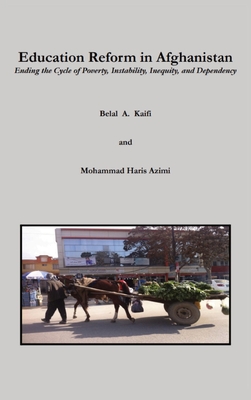
Kaifi, Belal A.
product information
description
conversations, and gathering primary and secondary data, the authors decided to write a book to help Afghanistan end the vicious cycle of poverty, instability, inequality, and dependency by focusing on improving the country's outdated and sub-optimal education system. As such, this book is a comparative and critical analysis of the Afghan education system with plausible solutions based upon decades of teaching and educational administrative experience both inside and outside of Afghanistan. Some of the added features in this book include: (1) important interviews conducted with subject matter experts, (2) a focus group of 20 Afghan students sharing their experiences and perspectives on the education system in Afghanistan which helped form the topics, chapters, and structure of this book, (3) occasional text translation into the Farsi and Pashto languages, (4) best practices from countries throughout the world mentioned for learning and benchmarking purposes, (5) information written and presented in a simple manner for native English speakers and also English language learners, and (6) potential for this book to be used by many nations around the world to help improve their education systems.
member goods
No member items were found under this heading.
listens & views

LOUDER THAN THE DRAGON: II ...
by LOUDER THAN THE DRAGON: II / VARIOUS
COMPACT DISCout of stock
$10.99
Return Policy
All sales are final
Shipping
No special shipping considerations available.
Shipping fees determined at checkout.






